Jump to Section
Owls in the UK (Full Guide with Pictures)
Last updated: 13 September 2023
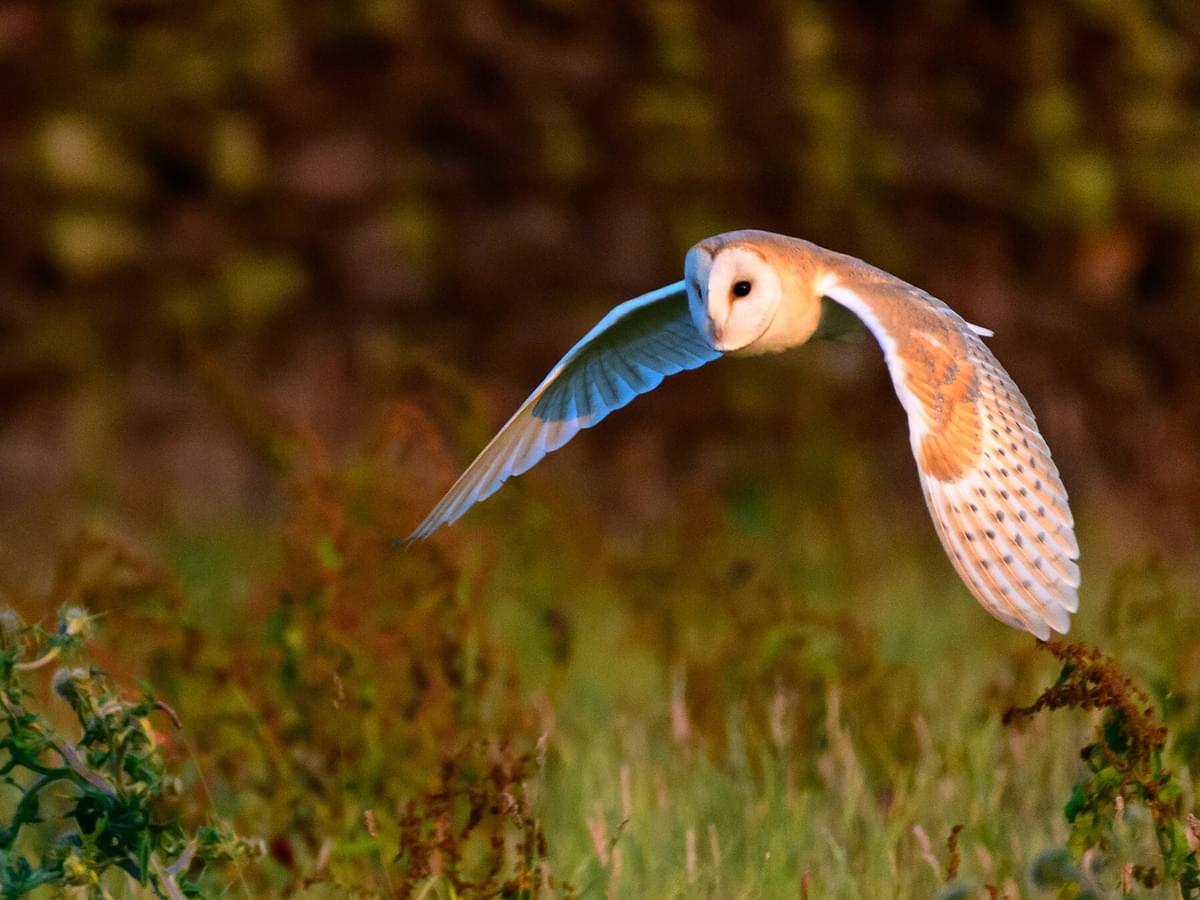
Owls are one of nature’s most elusive and secretive creatures, and they’re seldom seen with the naked eye. While you might hear an occasional characteristic ‘hoot hoot’ from a nearby tree or woodland, spotting an owl is an entirely different challenge!
In fact, owls are so elusive that they’re notoriously difficult to survey, and it’s almost impossible to estimate some of the UK’s owl populations.
There are four common species of owls in the UK and a handful of less-common species. Some of the rarer owls of the UK, such as the colossal Eurasian Eagle-Owl, are exceptionally uncommon.
Read on to discover why - and to learn more about owls in the UK.
Common Owl Species in the UK
The British owls below are generally the most likely ones you're going to spot in the UK (location dependant).
Tawny Owl
Strix aluco
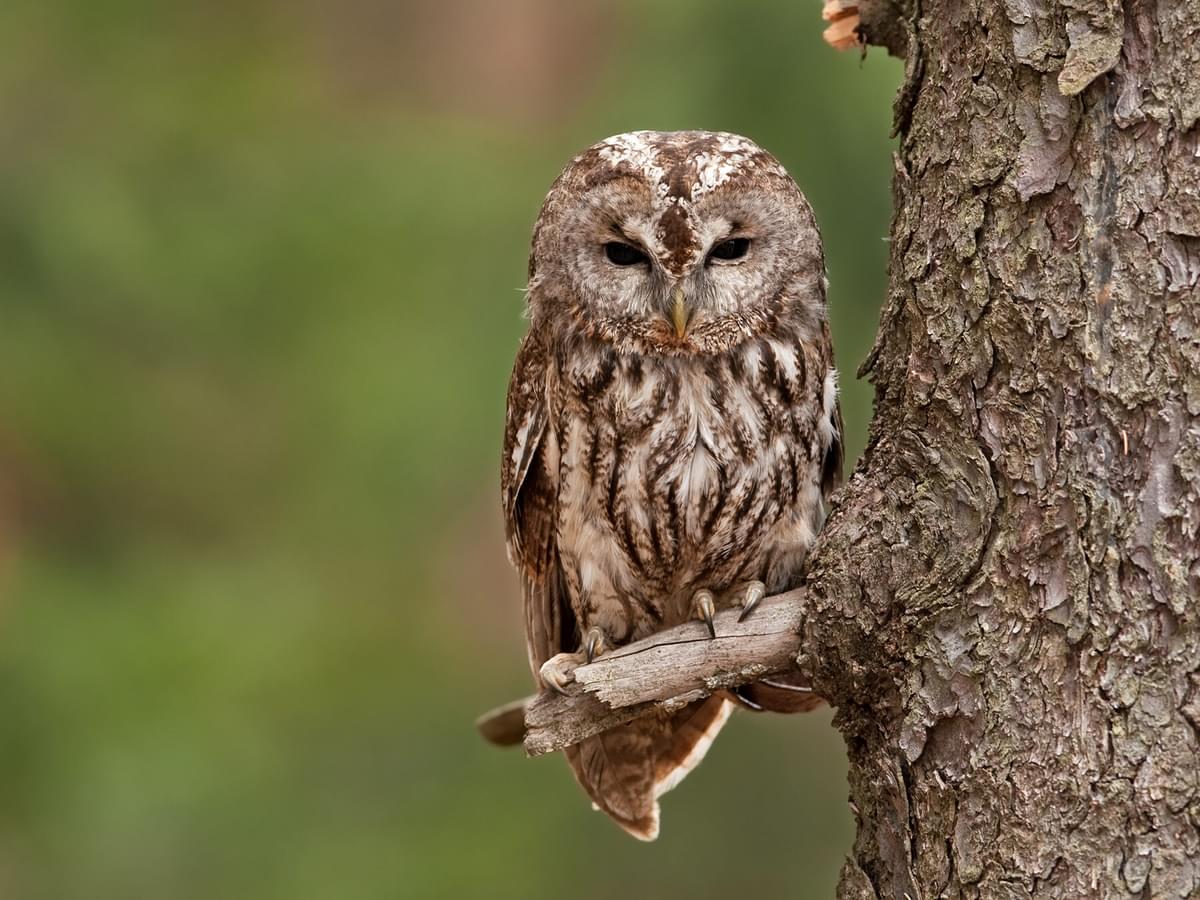
Length:
37cm to 43cm
Wingspan:
94cm to 104cm
Weight:
330g to 590g
Tawny Owl
The most common owl in the UK, there are an estimated 50,000+ pairs of Tawny owls in the UK and the British Isles. Tawny owls are a true native species to much of the UK but are almost completely absent from the island of Ireland. However, a wild Tawny owl was confirmed in County Down in 2013, so that might be changing.
Tawny owls are typically owl-like. They’re extremely secretive and strictly nocturnal - the odds of seeing one in the day are almost nil.
What most people will recognise about the Tawny owl is its call - it consists of a hoo-hoo hoot and sticks out like a sore thumb in the dead of night. Tawnies eat mice, voles and other small animals and birds.
Appearance
Tawny owls are around the size of a Wood pigeon, measuring 36 to 39cm and with a wingspan of 94 to 105cm. They’re strong and robust with thick, soft, cryptic plumage. Plumage is darker on the wings and back and lighter on the underside. Their heads are rounded, and their eyes extremely dark.
Barn Owl
Tyto alba
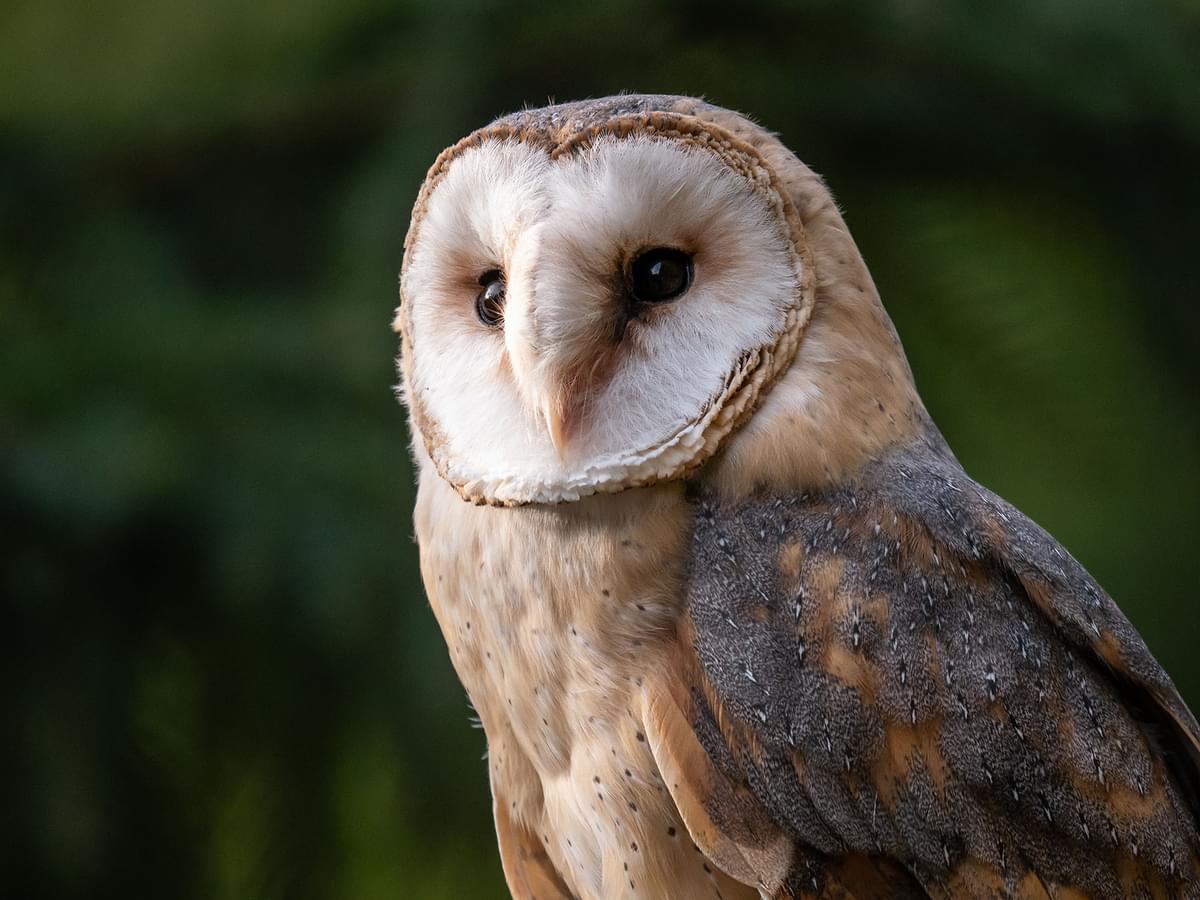
Length:
33cm to 39cm
Wingspan:
80cm to 95cm
Weight:
430g to 620g
Barn Owl
Barn owls are one of the most recognisable owls. They’re much lighter in colour than some owls and have distinctive heart-shaped faces. Barn owls have long been viewed as somewhat of a bad omen - they have a piercing, shrieking call which earned them the unfortunate nickname ‘demon owl’. Barn owls are found everywhere in the UK apart from the Scottish Highlands. They’re relatively common in lowland rural and agricultural areas.
While nocturnal like most owls, Barn owls in the UK often hunt during the day, especially in the winter. You’re most likely to see a Barn owl hunting over fields and grasslands at dusk or dawn.
According to the British Trust of Ornithology, barn owls are probably the second most common owl in the UK after the Tawny, with an estimated 10,000 pairs in the UK.
Appearance
Barn owls are around 30 to 40cm long with a wingspan of 80 to 95cm. They’re quite slender compared to other owls and have a light blonde/tan underside with darker brown, grey and hazel wings. Their heart-shaped faces are also more narrow than other owls.
Short-eared Owl
Asio flammeus

Length:
34cm to 43cm
Wingspan:
85cm to 110cm
Weight:
206g to 475g
Short-Eared Owl
Short-eared owls are less common than the aforementioned Barn and Tawny owls. Their numbers are tough to estimate, not just because of their secretive nature, but also because many winter migrants arrive on British shores from Scandinavia. Short-eared owls are primarily found in North Wales, Northern Ireland, North England, the Scottish moorlands, Pennines, the Hebrides, and the Orkney Islands.
Short-eared owls are more active in the UK than other owls. They’re usually spotted hunting over grasslands at dusk and dawn and prey upon mice, voles, rats and other small mammals.
The population of Short-eared owls is relatively unknown, but recent estimates suggest there are around 2,000 breeding pairs.
Appearance
Short-eared owls are similar-sized to Tawnies, measuring 34 to 42cm long with a wingspan of around 90 to 105cm. They’re lighter than Tawny owls, with a medium and dark-brown back and upper wings with a paler underside. They have short feathery ear tufts.
Little Owl
Athene noctua
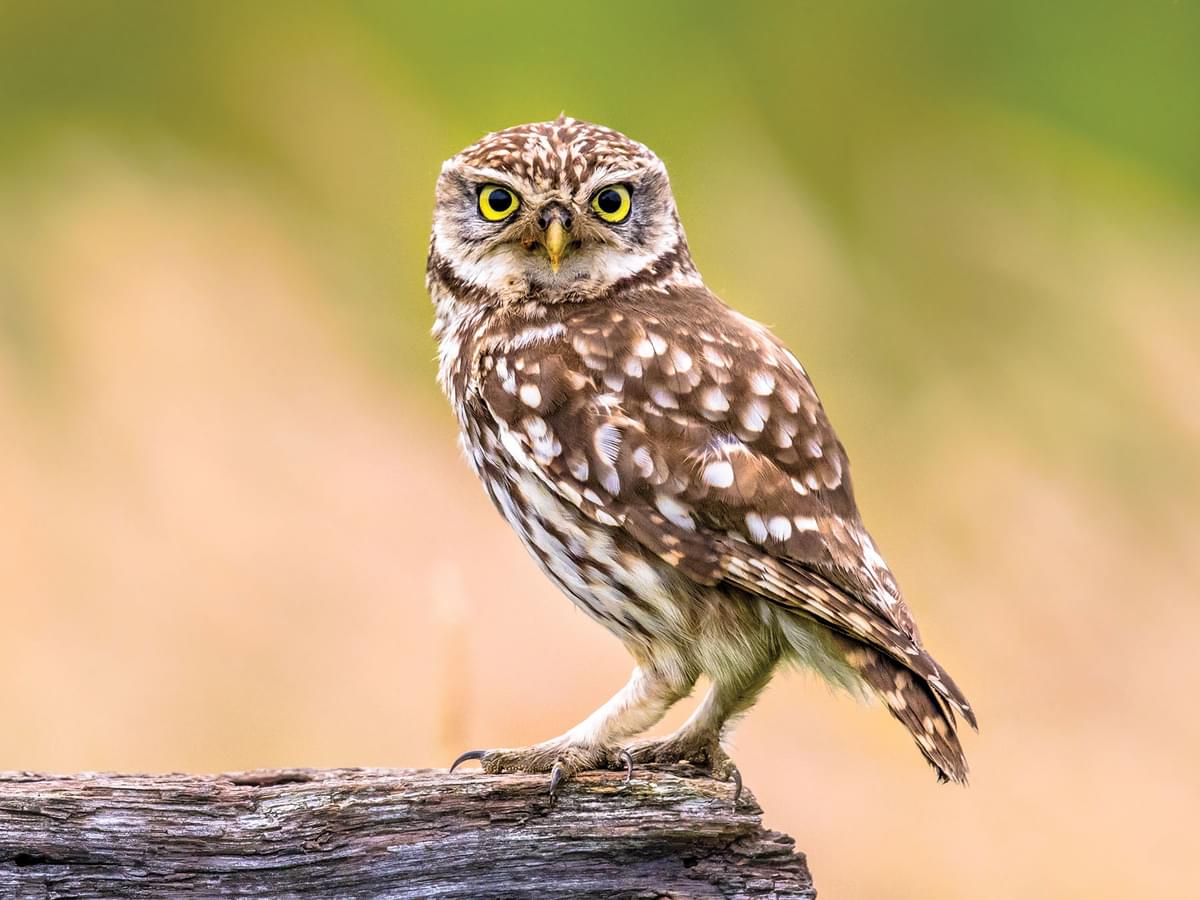
Length:
21cm to 23cm
Wingspan:
54cm to 58cm
Weight:
140g to 200g
Little Owl
The first Little owl in the UK was recorded in 1758 and was a presumed vagrant from Europe or an escapee. In the 19th-century, Little owls were introduced by ornithologist and conservationist Edmund Meade-Waldo in Stonewall Park, Kent.
Meade-Waldo allegedly released 40 owls between 1874 and 1880, and their numbers are now thought to be within the region of 6,000. Little owls are not usually considered natives, but some naturalists argue that they were once common in Britain, which makes them a reintroduced native species. Today, they’re a widely accepted component of British biodiversity.
Little owls are thought to be relatively common across lowland areas of England, Scotland and Wales. They primarily eat invertebrates such as beetles, earwigs, cockchafers and crane flies. Little owls are fairly active in the day and are usually spotted hunting invertebrates from a treetop perch.
Appearance
Though not as small as the Eurasian pygmy owl or Eurasian Scops-Owl, Little owls are some of the smallest owls in Europe, measuring 20 to 22cm with a wingspan of 55cm or so. Little owls are typically owlish with dense, soft and cryptically-coloured plumage and a rounded head. They have deep ‘eyebrows’ and large eyes with yellow irises.
Less Common Owl Species in the UK
Although some of these owls can still regularly be seen, you're generally less likely to come across them than the owls above.
Snowy Owl
Bubo scandiacus
Length:
53cm to 66cm
Wingspan:
125cm to 166cm
Weight:
710g to 2.95kg
Snowy Owl
The strikingly beautiful Snowy owl is a rare migrant to the UK during winter. Snowy owls live in the Arctic Tundra, including much of Greenland, northern Scandinavia and Siberia. They’re largely migratory and head south during the extremely bitter Tundra winter, where temperatures can plummet to -40C.
Snowy owls usually migrate into mainland Scandinavia, Central Russia and isolated parts of Eastern Europe and East Asia, but vagrants have been reported in Scotland. From 1967 to 1975, Snowy owls were recorded breeding in Fetlar in the Shetland Isles, but today, they’re considered a rare winter visitor to Shetland, the Outer Hebrides and the Cairngorms.
In 2008, birdwatchers thought there was a chance that Snowy owls were breeding in Scotland when a male and female were sighted in close proximity, but the pair were later spotted miles apart. Then, in 2018, a female was spotted in Norfolk, which is uncharacteristically far south. Snowy owls end up further south during exceptionally cold winters.
Snowy owls were popularised by Hedwig, Harry Potter’s pet Snowy owl.
Appearance
Snowy owls are exceptionally large owls - around the fifth or sixth-largest in the world. They measure around 63 to 73cm in length and have a wingspan of around 142 to 162cm. Their plumage ranges from white with dark brown markings on the wings and body to nearly all-white.
Long-eared Owl
Asio otus

Length:
35cm to 40cm
Wingspan:
90cm to 100cm
Weight:
220g to 435g
Long-Eared Owl
The Long-eared owl is sometimes deemed to be the UK’s rarest native owl. However, this highly secretive owl is incredibly hard to survey, so much so that we really have no idea how many breeding pairs there currently are. Recent surveys estimate the population to be around 2,000 to 6,000 pairs, which is quite similar to the Short-eared owl.
In comparison to the Short-eared owl, the Long-eared owl is strictly nocturnal and is only likely to be seen during migration or when disturbed.
Long-eared owls are thought to be widely distributed across the UK and make their habitats in coniferous woodland, dense hedgerows and ancient deciduous woodland. They always choose quiet, isolated areas away from human settlements. Though found across the UK and Ireland, there are fewer birds in Wales than in England or Scotland.
Appearance
With its long ear tufts, the Long-eared owl is visually striking. Owl ear tufts are not associated with their ears at all, and may assist the owl in camouflaging itself against foliage, though the jury is still out on their exact purpose. The ear tufts are around 2 to 3cm long and stand up when the owl is alarmed.
Long-eared owls aren’t too dissimilar in size to their Short-eared cousins, measuring 35 to 37cm long with a wingspan of 92 to 95cm. They have mottled orange-brown plumage and are relatively slender compared to other owls.
Eurasian Scops-owl
Otus scops
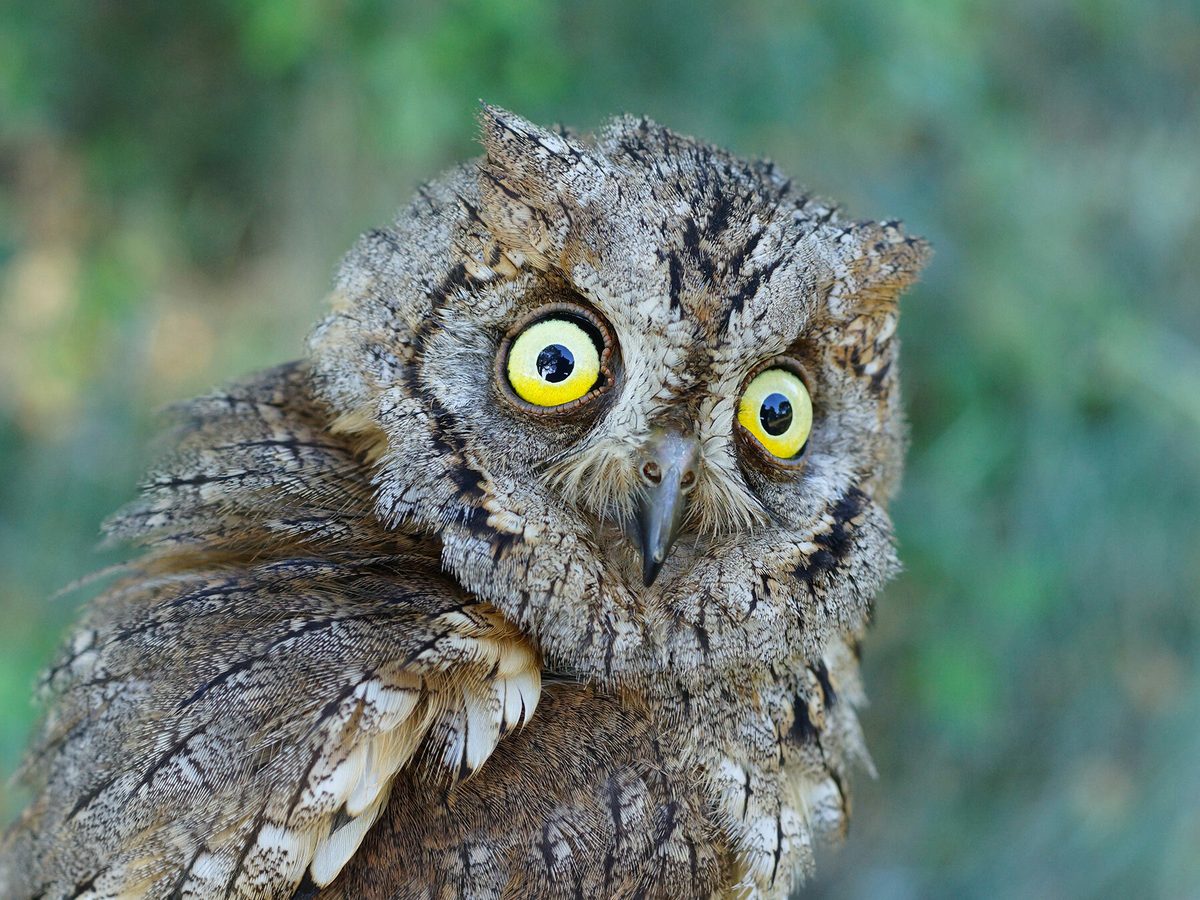
Length:
19cm to 21cm
Wingspan:
47cm to 54cm
Weight:
60g to 135g
Eurasian Scops-Owl
The Eurasian Scops-Owl breeds south of the UK, across much of southern Europe and the Mediterranean. In the west, its northernmost breeding populations are found in southern and coastal central France. In the east, its range extends further north into Russia. So, when is the Eurasian Scops-owl found in the UK?
These are migratory owls that head into Africa during winter. When they return to Europe, a handful of Eurasian Scops-owls are thought to ‘overshoot’ their breeding grounds and end up in the UK. There were some 96 reported UK sightings of the Eurasian Scops-owl before 2012, and there have been isolated sightings since. Sightings seem to be widely distributed across the UK and are most prevalent in spring, when the owls return from migration.
Appearance
The Eurasian Scops-owl is marginally smaller than the Little owl, measuring 19 to 21cm with a wingspan of 47 to 54m. The plumage is typically owlish; they have a light and dark brown back and upper parts and slightly paler underparts. Their faces are also quite light in colour.
Eurasian Eagle-Owl
Bubo bubo
Length:
68cm
Wingspan:
175cm
Weight:
2.3kg to 3.3kg
Eurasian Eagle-Owl
There is a giant owl lurking in isolated corners of the British countryside - the Eurasian Eagle-Owl. This impressive owl is larger than a Snowy owl and was perhaps once relatively common throughout the British Isles.
In the late 90s, conservationists confirmed that a pair were successfully breeding in the North Yorkshire Moors, and today, there are thought to be around 50 breeding pairs. Wild Eagle-Owls have also been sighted in Galloway, Inverness-shire and Sutherland in Scotland, and there are calls to add them to the official list of British Birds.
The Eurasian Eagle-Owl has an incredibly diverse diet and is an exceptionally talented hunter. These powerful owls hunt and kill everything from rabbits and voles to small deer and even other raptors.
Appearance
As one of the largest owls in the world, the Eurasian Eagle-Owl is large and imposing. They’re around 58 to 71cm in length and have a wingspan of around 150 to 180cm, thus making them the largest owl in the UK, and one of the UK's largest birds, a similar size to the Red kite and smaller than the Golden and White-Tailed eagles.
Eurasian Eagle-Owls have large ear tufts and feature typically owl-like plumage; their wings are dark and light brown and their bodies slightly lighter.
What are owls?
Owls are birds of prey from the Order Strigiformes. There are two commonly accepted families of owls; the true or typical owl family Strigidae and the Barn owl family Tytonidae. There are 200 species of owls in total, divided between some 27 genera, and many subspecies besides.
Virtually all owls have some things in common. Firstly, owls are largely nocturnal birds hunting, breeding and communicating at night, though some species are also active during the day.
Secondly, most owls are solitary and prefer to isolate themselves from others. But, again, there are exceptions, such as the Burrowing owl.
Thirdly, owls are highly adapted hunters. They have incredible binocular vision and some of the most acute hearing in the animal kingdom. Owl ears are positioned symmetrically on their head, allowing them to judge the delay between sounds entering one ear. This allows them to pinpoint the exact location of tiny noises in a 3D space. Owls’ heads and faces are often shaped a bit like radar dishes, and they perform a similar function. Their heads help catch sounds and direct vibrations towards their ears.
Most owls are quite dark with camouflaged or ‘cryptic’ plumage. Their feathers are softer than other birds’ and many owls are quite downy. This helps them fly without making much noise. Some species of strictly nocturnal owls can take off, fly and land in near-silence.
Owls are carnivorous birds. The larger ones typically eat mammals, birds, fish and reptiles, and the smaller ones eat invertebrates.

Long-Eared Owl perched on a branch
Where are the best places to see owls in the UK?
Owls are distributed throughout the UK. Dusk and dawn are the best time to spot owls with the naked eye.
The National Trust has a well-maintained list of ‘owl haunts’, ranging from Scotland to Wales, Northern Ireland and even London. Abbeys, castles and stately homes are excellent places to spot owls at night. For example, Calke Abbey in Derbyshire and the Holnicote Estate in Exmoor are great places to look for Tawny owls. Stowe, in Buckinghamshire and Sissinghurst Castle in Kent, are hotspots for Barn owls.
As for the rarer species of owls, you’ll probably need to head deep into the wilderness to have a chance to see them!
What is the most common owl in the UK?
The Tawny owl is the most common owl in the UK and is also widely distributed, despite being almost completely absent from Northern Ireland.
There are around 50,000 breeding pairs of Tawny owls in Britain. The next most common owl is the Barn owl, with upwards of 10,000 breeding pairs.

The most common own in the UK, the Tawny Owl
What is the largest owl in the UK?
The largest owl in the UK is the Eurasian Eagle-Owl. These huge owls were perhaps once more common in the UK, but were thought to be practically extinct in the 18th and 19th-centuries with few meaningful sightings.
In the late-90s, Eurasian Eagle-Owls returned to the North Yorkshire Moors, and there are now some 50 estimated breeding pairs. The Eurasian Eagle-Owl is a huge owl, measuring around 75cm long with a 180cm wingspan. It’s followed closely by the Snowy owl, which is a rare winter visitor to Scotland and northern England.

The largest owl in the UK, the Eurasian Eagle Owl
What is the smallest owl in the UK?
The smallest owl in the UK is the Little owl, which measures 20 to 22cm with a wingspan of around 55cm.
However, the Eurasian Scops-Owl is very slightly smaller, measuring 19 to 21cm with a wingspan of 47 to 54m. The Little owl is relatively abundant while the Eurasian Scops-Owl is a very rare vagrant.

The smallest owl in the Uk is the Little Owl
How many owls are there in the UK?
There are five resident species of owl in the UK; the Tawny owl, Barn owl, Short-eared owl, Long-eared owl and Little owl. The Little owl was introduced in the 1800s, whereas the other four species are long-term natives.
Additionally, the once-native Eurasian Eagle-Owl is becoming more common in North England, and there are calls to add it to the official list of British birds. So it’s likely that there will be six recognised species of resident owls in the UK at some point in the future.
One species of owl arrives in winter; the Snowy owl, and one that very rarely arrives in spring; the Eurasian Scops-Owl.
Are owls under threat?
Some species of owls in the UK are under threat. For example, barn owl populations have started to decline after remaining stable for some time, and Tawny owls are also declining due to the loss of woodland habitats.
The Tawny, Barn, and Short-eared owls are currently on the UK’s Amber conservation list as ‘Birds of Concern’. Declines in the UK’s owl population are mirrored across Europe.

Barn Owl perched on a tree stump
What do owls symbolise?
Owls have a long and illustrious history of symbolism. These beautiful and intriguing birds are one of nature’s most captivating creatures and they’ve featured in myth, legend and folklore for thousands of years. Some ancient cultures revered owls for their supposed wisdom, knowledge and intuition, whereas others saw them as a symbol of death, hopelessness and evil.
In Ancient Greek mythology, owls were much revered by Athena, the Goddess of Wisdom. Owls were protected in the Acropolis - the Greeks believed that ‘inner light’ enabled them to see when other creatures could not.
In Ancient Rome, however, owls were largely seen as an omen of death. Owls apparently appeared sometime before the deaths of Caesar, Marcus Aurelius and Augustus.
In Native Indian cultures, owls had various symbolism, mostly positive. Some were seen as protective spirits, others as guardians of the dead, or watchers of the night. For example, Burrowing owls were thought to protect the dead once they were buried.
In Medieval Europe, owls were primarily seen as the harbingers of death and evil. In England, The Barn owl was also thought to indicate inclement storms. In the 17th and 18th centuries, fictional accounts of owls started to emerge that portrayed owls in a more positive light.
Today, owls are heavily associated with wisdom and knowledge. Wisdom is a largely human concept that we’ve anthropomorphically projected onto owls - owls are intuitive birds rather than intelligent in the same way as corvids and parrots.
On this page
- Common Owl Species in the UK
- Tawny Owl
- Barn Owl
- Short-Eared Owl
- Little Owl
- Less Common Owl Species in the UK
- Snowy Owl
- Long-Eared Owl
- Eurasian Scops-Owl
- Eurasian Eagle-Owl
- What are owls?
- Where are the best places to see owls in the UK?
- What is the most common owl in the UK?
- What is the largest owl in the UK?
- What is the smallest owl in the UK?
- How many owls are there in the UK?
- Are owls under threat?
- What do owls symbolise?











